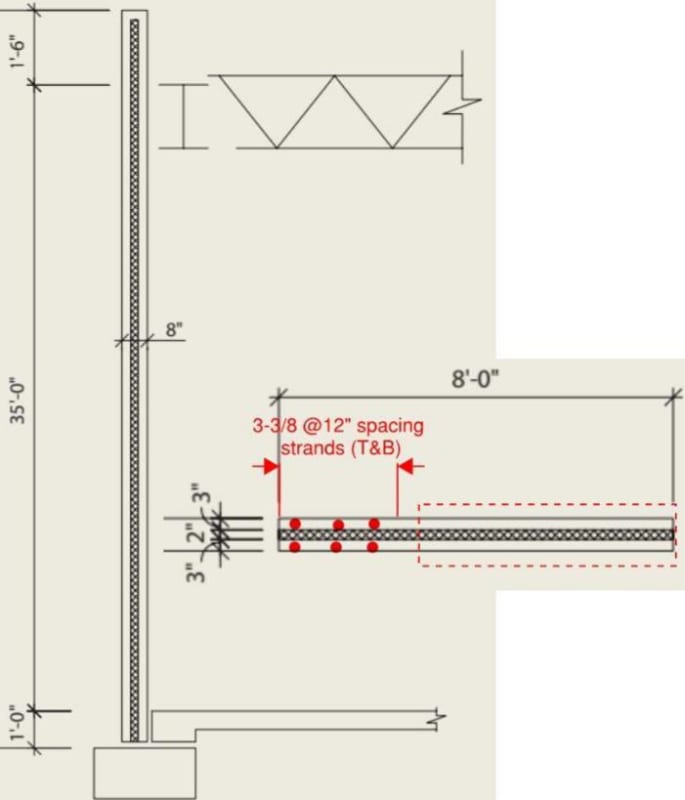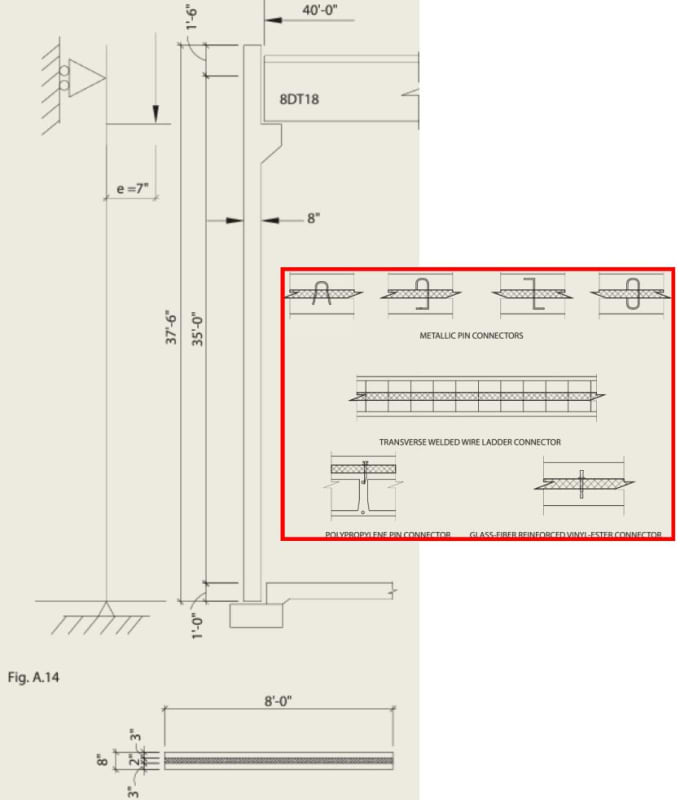Hello!
I am looking at 8" think precast prestressed concrete insulation wall design ONLY with strands and shear connectors.
(No WWR or additional reinforcement except solid zone around stripping/handling anchors.)
As strand layout was decided for the wide pieces with opening in the middle of the piece,
narrow pieces can have large area with no reinforcement.
Don't you think these plain concrete areas will bring about cracks later after they are erected?
In the past, wire meshes were added as minimum reinforcement.
But, this is a new trial with the current ACI 318.
Your comments would be appreciated!

_JRW
I am looking at 8" think precast prestressed concrete insulation wall design ONLY with strands and shear connectors.
(No WWR or additional reinforcement except solid zone around stripping/handling anchors.)
As strand layout was decided for the wide pieces with opening in the middle of the piece,
narrow pieces can have large area with no reinforcement.
Don't you think these plain concrete areas will bring about cracks later after they are erected?
In the past, wire meshes were added as minimum reinforcement.
But, this is a new trial with the current ACI 318.
Your comments would be appreciated!

_JRW

